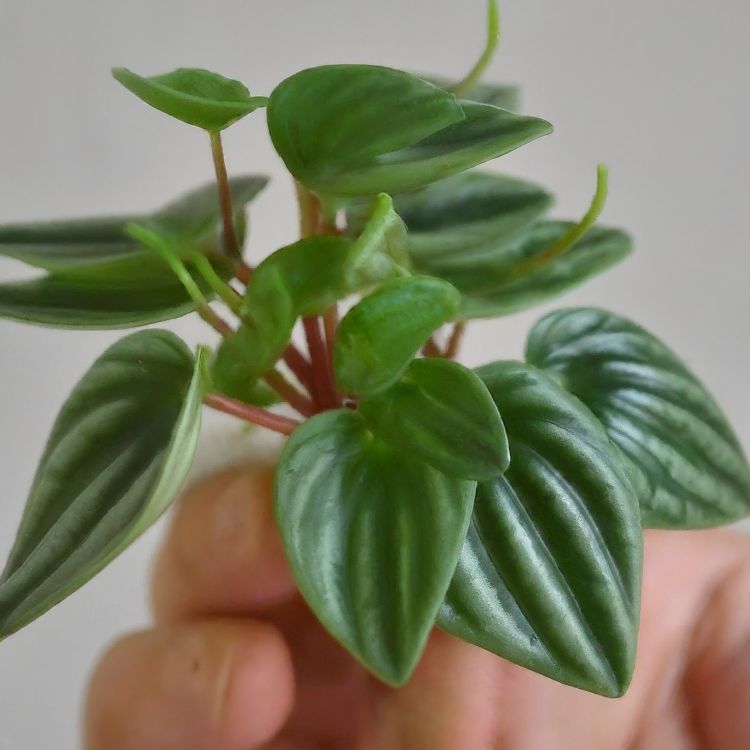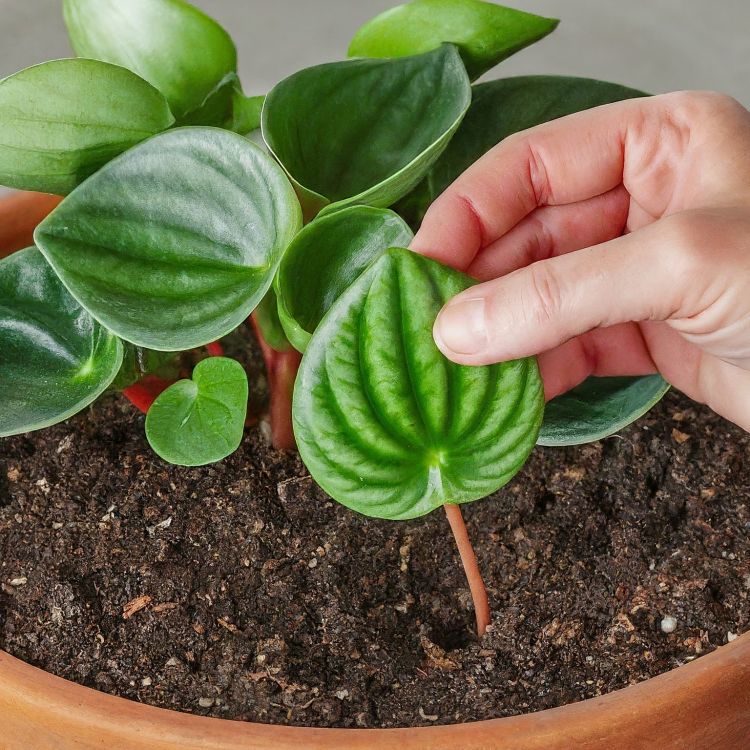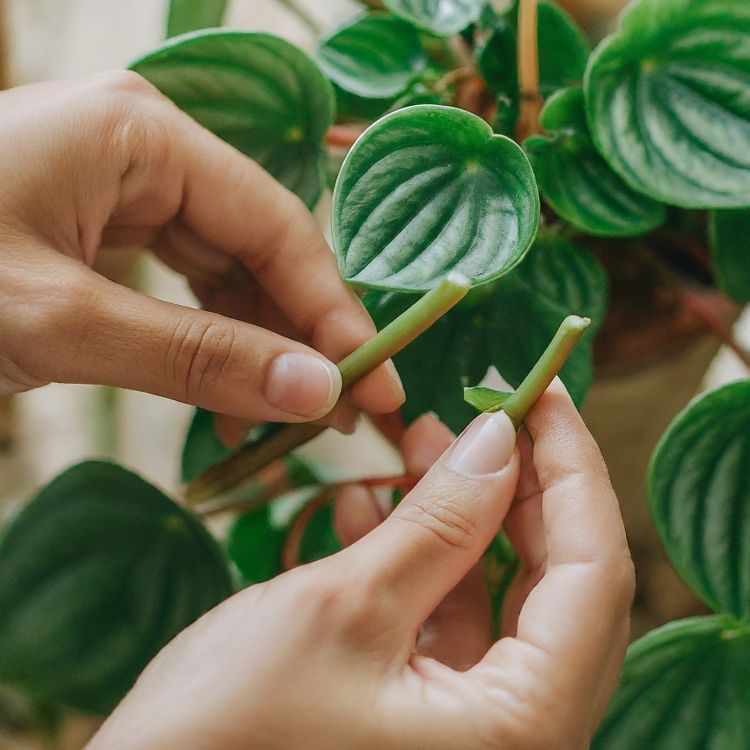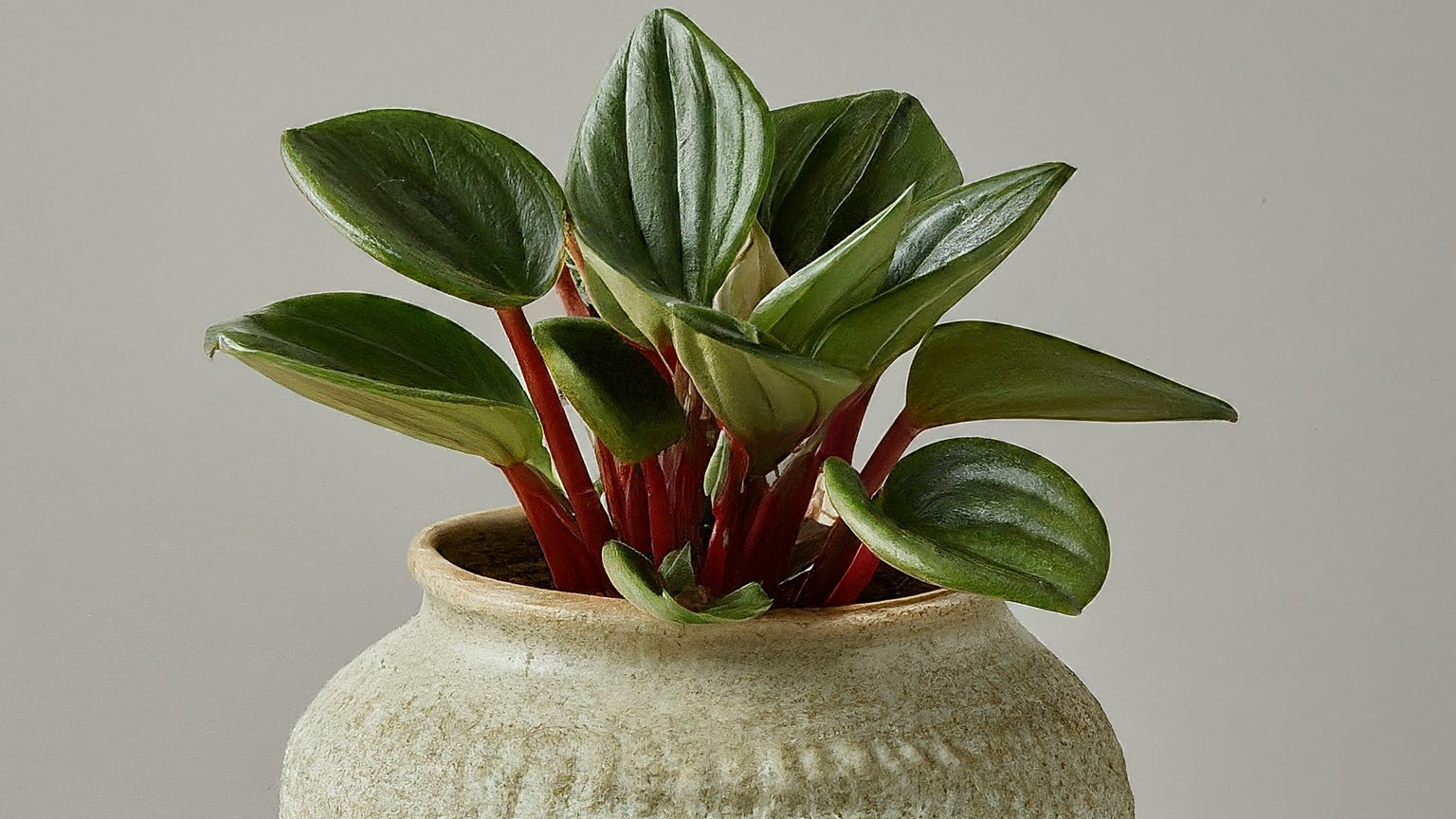The Peperomia plant, a delightful member of the Piperaceae family, hails from the tropical and subtropical regions of Central and South America. Often referred to as “radiator plants” due to their initial discovery in the warm, steamy environments surrounding Victorian home radiators, they share lineage with black pepper (Piper nigrum).
Thriving in warm, humid climates like the rainforests of Brazil and Colombia, the Peperomia plant typically adopts an epiphytic lifestyle, naturally clinging to trees and other flora for support rather than rooting directly in the soil. Although they can technically grow outdoors in warm, humid regions, Peperomias are primarily cultivated as indoor houseplants, thanks to their compact size, low light requirements, and ability to withstand indoor conditions.
Their adaptation to indoor environments stems from their tolerance for lower light levels compared to many other plants, making them perfect for brightening up rooms with limited natural light, such as bathrooms or offices with small windows. Indoor plants prefer bright, indirect light but can also tolerate lower light conditions, along with average room temperatures ranging from 65-75°F (18-24°C). Given their origin in humid environments, they appreciate moderate to high humidity levels, rendering them excellent candidates for bathrooms or kitchens.
Contents
- 1 Types of Peperomia Plant
- 2 Propagation of Peperomia Plant
- 3 Tips for Success
- 4 Caring Tips for Peperomia Plant
- 5 Benefits of Peperomia plant
- 6 FAQS
- 6.1 Can Peperomia plants be grown outdoors?
- 6.2 How often should I water my Peperomia plant?
- 6.3 What is the best soil mix for Peperomia plants?
- 6.4 Can I propagate my Peperomia plant?
- 6.5 How much light does a Peperomia plant need?
- 6.6 How do I care for yellowing leaves on my Peperomia plant?
- 6.7 What are the benefits of having a Peperomia plant indoors?
- 7 Growing and Enjoying Peperomia Plant
- 8 Author
Types of Peperomia Plant

Peperomia plants come in a variety of types, each with its distinct features and appeal. Here are five common types of Peperomia plants.
Peperomia obtusifolia
Peperomia obtusifolia also known as the Baby Rubber Plant, this variety features glossy, rounded leaves with a thick, succulent-like texture. It’s a popular choice for indoor gardening due to its ease of care and attractive foliage.
Peperomia caperata
Peperomia caperata commonly referred to as the Ripple Peperomia, this variety is characterized by its deeply textured, crinkled leaves that resemble wrinkled paper. It adds a unique and eye-catching texture to any indoor plant collection.
Peperomia argyreia
Peperomia argyreia also known as the Watermelon Peperomia, this variety gets its name from the distinctive silver and green striped pattern on its leaves, resembling the rind of a watermelon. It’s prized for its striking foliage and compact growth habit.
Peperomia prostrata
Peperomia prostrata often called the String of Turtles or Turtle Vine, this trailing variety features small, round leaves with intricate patterns resembling turtle shells. It’s perfect for hanging baskets or cascading over the edges of containers.
Peperomia magnoliifolia
Peperomia magnoliifolia known as the Magnolia-leaf Peperomia, this variety showcases large, heart-shaped leaves with prominent veins. It’s prized for its elegant foliage and makes a lovely addition to any indoor plant collection.
Propagation of Peperomia Plant
Here are simple and very easy steps to propagate your peperomia plant through leaf and stem cuttings.
Leaf Cuttings

Selecting the right leaf
- Choose a healthy, mature leaf with visible veins.
- Avoid wrinkled or damaged leaves.
- Choose a larger leaf that offers more potential for root growth.
Cutting
- Use sharp, sterilized scissors or pruners.
- Cut the leaf petiole (stalk) close to the main stem, ensuring a clean cut.
- For faster rooting, you can cut the leaf horizontally across the veins into sections, each with a piece of the main petiole attached.
Planting the leaf sections
- Prepare a well-draining potting mix, ideally a blend for succulents or cacti.
- Moisten the mix slightly.
- Make a small hole in the soil and gently insert the leaf section, ensuring the end of the branch is buried.
- Firm the soil around the base.
Creating a nurturing environment
- Place the pot in a warm location with bright, indirect sunlight.
- Avoid direct sunlight, as it can scorch delicate leaves.
- Keep the soil consistently moist, but not soggy. Misting the leaves regularly can help maintain humidity.
- Cover the pot loosely with plastic wrap or a clear bag to create a mini greenhouse, trapping moisture and promoting root growth.
Rooting can take several weeks, but regularly monitor the soil moisture and mist. When tiny roots and new growth appear, gradually remove the plastic wrap to acclimate the plant to the surrounding environment.
Stem Cuttings

Choosing the right stem
- Select a healthy, non-flowering stem with at least 2-3 nodes (leaf junctions).
- Use sharp, sterilized pruners to make a clean cut just below a node. Aim for a length of 2-3 inches.
Planting the stem-cutting
- Prepare a well-draining potting mix.
- Dip the cut end of the stem in rooting hormone (optional, but can encourage faster root growth).
- Make a hole in the soil and gently insert the stem, ensuring a node is buried.
- Firm the soil around the base.
Providing optimal conditions
- Place the pot in a warm location with bright, indirect sunlight.
- Water lightly to keep the soil moist, but not soggy.
- Cover the pot loosely with plastic wrap or a clear bag to create a mini greenhouse.
Roots will develop typically after 2-4 weeks. When roots develop and new leaves sprout, gradually remove the plastic wrap for acclimation.
Tips for Success
- Use sterilized tools to prevent disease transmission.
- Choose healthy mother plants for better propagation success.
- Ensure proper drainage to avoid root rot.
Caring Tips for Peperomia Plant
Caring for the Peperomia plant is simple and easy, with a few care tips, everyone can grow a healthy and lush Peperomia plant.
Light
Place your Peperomia in bright, indirect light, avoiding direct sunlight to prevent leaf burn.
Watering
Let the top part of the soil dry before watering. Water a little bit regularly to keep the soil evenly damp, but don’t overdo it.
Temperature
Maintain normal room temperatures between 65-75°F (18-24°C). Shield your plant from drafts and extreme temperature swings, which can stress it out.
Humidity
While Peperomia plants enjoy higher humidity levels, they can adapt to regular indoor humidity. Increase humidity by misting the plant or using a humidifier nearby.
Pruning
Encourage fuller growth by trimming leggy stems. Remove yellowing or dead leaves regularly for a tidy appearance and to promote plant health.
Benefits of Peperomia plant
There are several benefits of Peperomia plants, which is why the Peperomia plant is very popular among houseplants.
Air Purification
Like many houseplants, Peperomias help improve indoor air quality by filtering out pollutants and releasing oxygen. This can contribute to a healthier environment for you and your family.
Low-Maintenance
Peperomias are relatively easy to care for and require minimal attention compared to some other houseplants. They can tolerate a variety of indoor conditions and are forgiving of occasional neglect.
Adaptability
Peperomias are versatile plants that can thrive in a range of environments, from low light to bright, indirect light. This makes them suitable for various indoor spaces, including offices, living rooms, bedrooms, and bathrooms.
Aesthetic Appeal
With their diverse foliage and compact growth habits, Peperomias add a touch of greenery and visual interest to any room. They come in a variety of leaf shapes, colors, and textures, allowing you to choose a variety that complements your decor.
Propagation
Peperomias are easy to propagate, allowing you to expand your plant collection or share cuttings with friends and family. This adds to the enjoyment of growing Peperomias and can be a rewarding experience for plant enthusiasts.
FAQS
Can Peperomia plants be grown outdoors?
While Peperomia plants can technically thrive outdoors in warm, humid regions, they are primarily cultivated as indoor houseplants due to their adaptability to indoor conditions and compact size.
How often should I water my Peperomia plant?
Water your Peperomia plant sparingly but consistently, allowing the top inch of soil to slightly dry before watering. Avoid overwatering.
What is the best soil mix for Peperomia plants?
Peperomias prefer a well-draining soil mix, ideally a blend for succulents or cacti. This helps prevent waterlogging and promotes healthy root growth.
Can I propagate my Peperomia plant?
Yes, Peperomias are easy to propagate through both leaf and stem cuttings. Follow the simple steps provided in the article to propagate your Peperomia and expand your plant collection.
How much light does a Peperomia plant need?
Peperomias thrive in bright, indirect light but can also tolerate lower light conditions. Avoid placing them in direct sunlight to prevent leaf burn.
How do I care for yellowing leaves on my Peperomia plant?
Yellowing leaves on a Peperomia plant may indicate overwatering or underwatering. Adjust your watering schedule accordingly, and remove any yellowing or dead leaves regularly to promote plant health.
What are the benefits of having a Peperomia plant indoors?
Peperomia plants offer several benefits, including air purification, low maintenance care, adaptability to indoor conditions, aesthetic appeal, and ease of propagation. They can enhance indoor spaces while contributing to a healthier environment.
Growing and Enjoying Peperomia Plant
Caring for your Peperomia plant is a breeze with these simple tips! Whether you’re a seasoned plant enthusiast or just starting your green journey, Peperomia’s charm and ease of care make it a perfect choice for any indoor space. From its lush foliage to its air-purifying qualities, the Peperomia brings both beauty and benefits to your home. With a little love and attention, your Peperomia plant will thrive, adding a touch of nature to your surroundings for years to come. So go ahead, grow your Peperomia family, and enjoy the rewards of nurturing these delightful plants!

